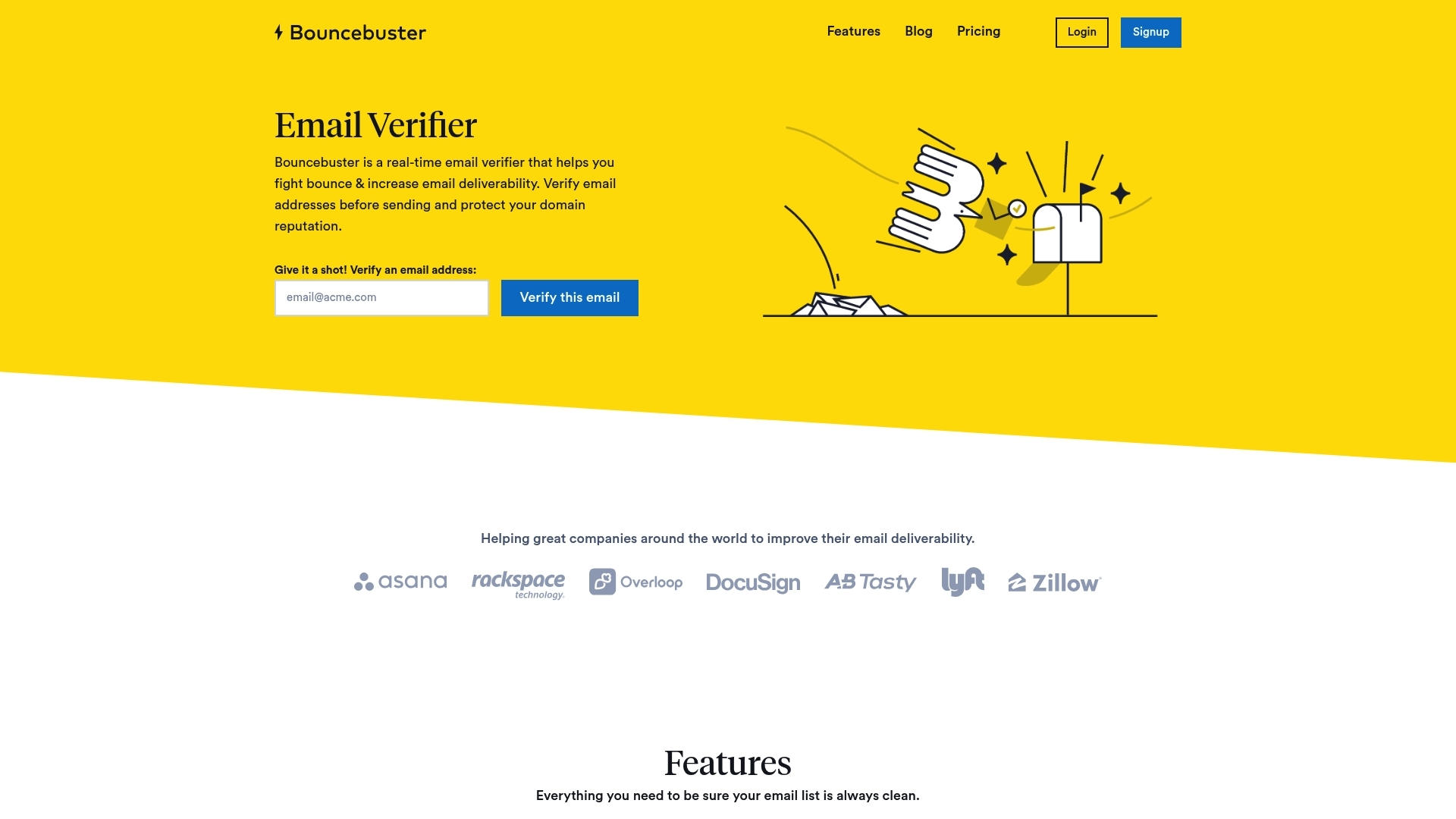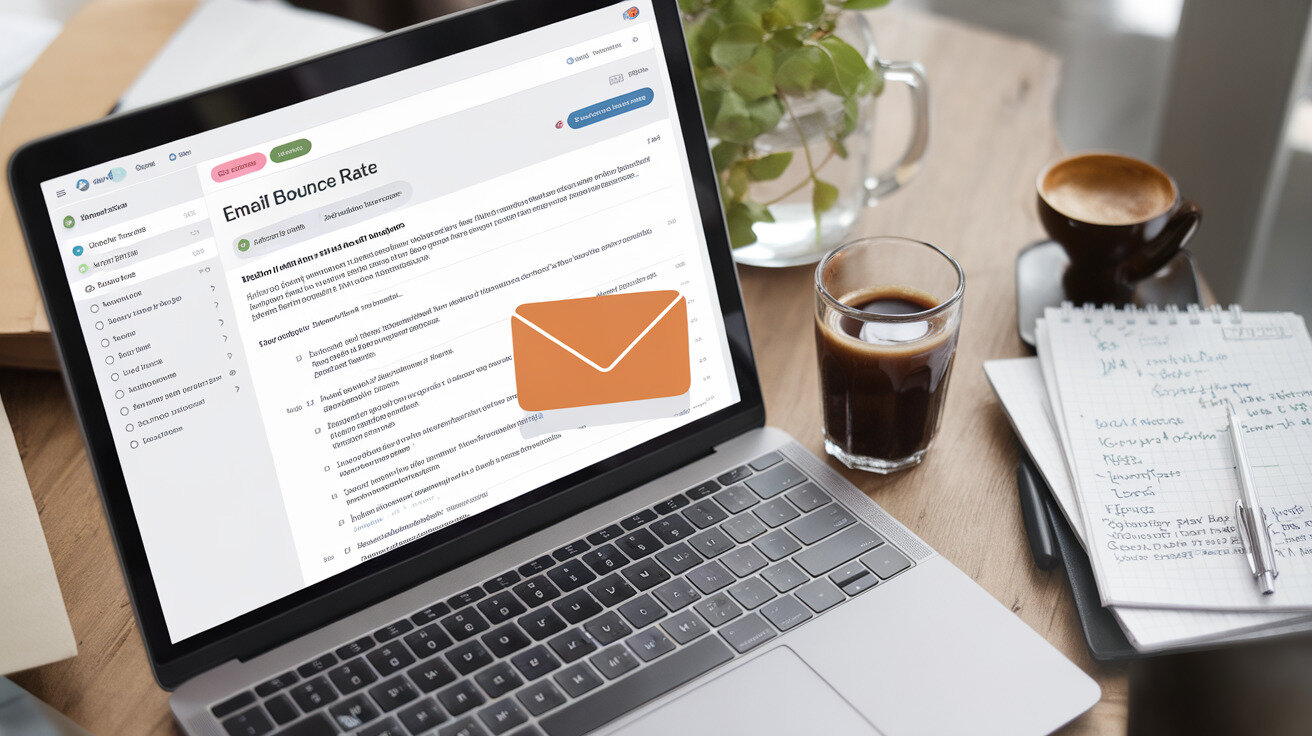How to reduce your email bounce rate with proven strategies
An email bounce happens when an email cannot be delivered to an intended recipient. This failed delivery directly influences your email marketing campaign’s effectiveness. To understand how, let’s explore the two types of bounces:
- Soft Bounce: Temporary issues that typically resolve, like full inboxes.
- Hard Bounce: Permanent problems, such as nonexistent email addresses.
Impacts on Deliverability and Reputation
- Deliverability: High bounce rates lower deliverability scores. Email providers may start marking your messages as spam.
- Sender Reputation: Persistent bounces damage your "sender reputation." A poor reputation can lead to emails routed straight to junk folders or blocked entirely.
Both deliverability and sender reputation significantly affect your marketing ROI. Minimizing bounces ensures higher engagement and conversion rates.
What are the common causes of high email bounce rates?
High email bounce rates are a common challenge for marketers, often signaling underlying issues in the email delivery process. Identifying these causes is crucial for effective mitigation.
Outdated Email Lists
One of the most prevalent reasons for high bounce rates is using outdated email lists. These lists often contain invalid, inactive, or incorrectly entered email addresses, leading to emails bouncing back as undeliverable. Regularly updating and maintaining a clean list is essential, ensuring that all email contacts are active and valid.
Spammy Content
Emails with overly promotional or aggressive content can trigger spam filters, causing them to bounce. Crafting content that is engaging yet compliant with email best practices helps maintain a healthy bounce rate. Avoid using excessive caps lock, misleading subject lines, or too many images, as these could mark your emails as spam.
Server Issues
Technical issues on the server end, either from the sender or recipient's server, can also contribute to bounces. This might include temporary server downtime, incorrect DNS settings, or anti-spam settings blocking emails. Regularly checking your technical setup and ensuring everything is configured correctly helps mitigate such issues.
Minimizing email bounce rates requires a comprehensive approach that includes maintaining up-to-date contact lists, crafting non-spammy content, and ensuring optimal server performance. For businesses looking to streamline this process, tools like BounceBuster offer valuable email verification services that can significantly reduce bounce rates by cleaning and validating email lists effectively.
How can cleaning your email list help reduce bounce rates?
Maintaining a clean email list is vital for reducing bounce rates and improving overall email marketing effectiveness. An unkempt list filled with outdated or invalid addresses not only leads to higher bounce rates but can also tarnish your sender reputation, affecting deliverability. Here’s why and how you should regularly update and verify your contact information.
Why List Hygiene Matters
-
Improved Deliverability: Regularly cleaning your email list helps ensure that your emails reach active and correct recipients. This maximizes engagement since you’re communicating with valid and interested contacts.
-
Enhanced Sender Reputation: High bounce rates can lead email service providers to view your domain as untrustworthy. A clean list reduces the chances of being marked as spam, protecting your reputation.
-
Cost Efficiency: Sending emails to invalid addresses wastes resources. Keeping your list tidy ensures you only send emails to potential customers.
Steps to Clean and Verify Your Email List
-
Regular Audits: Conduct periodic reviews of your email database to identify inactive subscribers. Remove those who haven’t engaged with your emails over a predefined period.
-
Use Email Verification Tools: Implement tools designed to validate email addresses effectively. These tools check whether the email addresses exist and are formatted correctly, reducing chances of bounces.
-
Monitor Engagement: Keep an eye on how recipients interact with your emails. Remove or reach out to non-engaged users periodically to decrease bounce rates and ensure your list remains active.
-
Utilize Double Opt-In: This process requires subscribers to confirm their sign-up via email. It ensures that only valid addresses are added to your list, and subscribers are genuinely interested.
Email verification tools like BounceBuster can streamline this process by offering bulk email verification, manual checks, and integration options. Utilizing such services can save time and improve the accuracy of your results, ultimately boosting your email campaign performance.
What tools are available for email verification and how do they work?
Email verification tools play a vital role in reducing bounce rates by ensuring that the emails you send reach the intended recipients. These tools help identify invalid or risky email addresses in your mailing list, significantly boosting your email deliverability.
Common Email Verification Tools
- Syntax Verification: Checks the email format to ensure it follows the standard acceptable patterns.
- Domain Verification: Confirms the validity of the domain used in the email address.
- Mail Server Verification: Verifies the presence of the domain's mail exchange server to ensure it can receive emails.
- Email Ping: Pings the email address to check if it’s capable of receiving emails without sending a real email.
How Do They Work?
-
List Upload: You begin by uploading your email list into the verification tool, which can usually handle bulk uploads such as CSV or XLS files.
-
Verification Process: The tool processes each email address through various levels of checks:
- Syntax Check: Identifies typos or incorrect formatting.
- Domain Check: Evaluates if the domain of the email exists and is active.
- Server Check: Probes the domain's mail server to confirm its ability to receive emails.
-
Risk Assessment: Some tools offer a risk assessment feature, which uses algorithms to determine the likelihood of a bounce or spam trap.
-
Report and Clean-up: After verification, a comprehensive report highlights which addresses are valid. You can update your list based on the results, ensuring it contains only valid addresses.
For businesses, employing a tool like BounceBuster can be instrumental in managing and verifying emails efficiently. With features that support bulk email verification and manual checks, these tools simplify the process of maintaining a healthy email list, thereby reducing bounce rates.
How can BounceBuster help in reducing email bounce rates?

How BounceBuster Works
-
Bulk Email Verification: Upload your email lists in formats like CSV or XLS. The tool scans the list to identify invalid or non-existent email addresses. This helps in keeping your email lists updated, thus minimizing bounce rates.
-
Manual Email Verification: For individual email checks, this feature allows businesses to validate specific addresses. This ensures each email sent has a higher probability of reaching its intended recipient.
-
Integration with Marketing Tools: BounceBuster offers a REST API, facilitating seamless integration with existing marketing systems and workflows. This allows for real-time email verification as new contacts are added to your database.
Improving List Cleanliness
BounceBuster doesn't just stop at verification. The platform also provides tools for list management, helping you sort through contacts and remove inactive or duplicate entries. This process significantly enhances list cleanliness and ensures that only verified addresses receive your marketing messages.
Benefits for Businesses
-
Enhanced Deliverability: By using BounceBuster, businesses can ensure higher delivery rates as their emails are less likely to bounce. This also improves engagement rates and customer response.
-
Better Sender Reputation: Consistently verifying email lists reduces the risk of emails being marked as spam, maintaining a positive sender reputation with both email service providers and recipients.
Utilizing a service like BounceBuster can streamline the verification process, integrate seamlessly with marketing efforts, and significantly reduce email bounce rates, ensuring more effective email marketing campaigns.
What are the best practices for integrating email verification into your marketing workflow?
Integrating email verification into a marketing workflow ensures a cleaner, more effective email list, which in turn enhances deliverability and minimizes bounce rates. Here's how to incorporate this process efficiently:
Align Verification with Existing Processes
- Assess Current Workflow: Before integration, evaluate your current email marketing processes to identify where verification can naturally fit.
- Plan Integration Points: Determine specific stages where email verification is most beneficial, such as right after subscriber sign-up or before each major campaign.
Choose a Reliable Tool
- Select Tools Suited to Your Needs: Use tools that offer bulk verification, simple interfaces, and necessary integrations. For instance, linking with CRM systems can be straightforward with access to a REST API.
Implement Automation for Verification
- Automate List Verification: Set up automatic verification to run at regular intervals. Automation reduces manual workload and ensures continuous list hygiene.
- Utilize Automated Feedback Loops: Integrate tools that provide immediate feedback on email validity, helping keep the list updated in real-time.
Educate Your Team
- Training Sessions: Offering training ensures your team understands the value and operation of new verification tools within the existing marketing framework.
- Documentation: Develop comprehensive, easy-to-understand documentation to guide team members on using verification tools effectively.
Monitor and Adjust
- Regularly Review Results: Keep an eye on how verification impacts your bounce rates and delivery stats to ensure it meets your goals.
- Gather Feedback: Continually collect input from your marketing team to refine verification processes and address any challenges.
By embedding verification into your marketing practices, utilizing tools such as BounceBuster provides seamless integration capabilities and valuable insights into your contact list status, optimizing your email campaigns' success.
Are there case studies showcasing successful reduction in email bounce rates?
Examining real-world examples can provide valuable insight into how businesses successfully reduce their email bounce rates, improving email marketing effectiveness.
An E-commerce Company’s Breakthrough
A mid-sized e-commerce company faced challenges maintaining high deliverability rates. Over time, they accumulated a significant number of inactive or invalid email addresses. This led to increased bounce rates and affected their sender reputation.
- Solution: They implemented regular email list cleaning combined with a comprehensive email verification process.
- Outcome: By partnering with an email verification service, the company reduced their bounce rate by 30% within three months. Deliverability improved, resulting in a 15% rise in open rates and better overall engagement.
Nonprofit Organization’s Strategic Change
A nonprofit organization aiming for better engagement found their outreach efforts hampered by high bounce rates. Their database included many outdated email addresses, hindering effective communication with potential donors.
- Strategy: They invested in an email verification tool, allowing them to periodically audit and prune their email list.
- Result: Over a six-month period, bounce rates decreased by 25%. This increase in valid email addresses enhanced their donor communication, ultimately boosting donations by 20%.
Case of a B2B Tech Firm
A B2B technology firm struggled with their email marketing ROI due to poor list quality driving high bounce rates. Realizing the impact on their reputation and sales pipeline, they took corrective measures.
- Action Taken: The firm adopted automated email verification solutions integrated within their marketing funnel.
- Impact: Automated validation cut bounce rates by 40% within a quarter, significantly improving lead quality and conversion rates while enhancing their sender score.
These examples demonstrate the tangible benefits businesses can achieve by integrating email verification processes and maintaining clean email lists. Such strategic efforts bolster communication channels, fostering higher engagement and conversion in marketing campaigns. For businesses looking to achieve similar results, using a dedicated tool like BounceBuster can considerably streamline this process, offering both bulk verifications and seamless integration with existing marketing systems.
FAQ
For marketers concerned about email bounce rates, common questions often arise about the processes and tools involved. This FAQ section aims to demystify some key concerns and provide clarity, especially regarding verification tools.
What is an Email Bounce Rate?
Email bounce rate is the percentage of emails that are not successfully delivered to the recipients' inbox. Understanding this metric helps diagnose issues in email campaigns and improves effectiveness.
How Do Bounce Rates Affect Sender Reputation?
High bounce rates negatively impact sender reputation. When an outgoing email consistently bounces back, email service providers may view your address as unreliable, diminishing deliverability and potentially marking future emails as spam.
What Factors Contribute to High Bounce Rates?
Several factors can lead to high email bounce rates:
– Outdated Email Lists: Using old lists that include invalid addresses.
– Content Flags: Emails that trip spam filters through poor content choices.
– Technical Errors: Misconfigurations or server issues that disrupt delivery.
Regular maintenance and adherence to best practices ensure lower bounce rates.
How Often Should I Clean My Email List?
Regularly. Performing periodic clean-ups—such as every quarter—helps maintain healthy bounce rates and ensures that your list is engaged and up-to-date.
What Does Email Verification Entail?
Email verification involves a systematic check to ensure that email addresses in your list are valid and capable of receiving messages. This process includes:
– Syntax Checks: Verifying correct formatting.
– Domain Verification: Confirming the domain is active.
– Server Checks: Ensuring servers can receive emails.
Can BounceBuster Integrate with My Existing Marketing Tools?
Yes, BounceBuster provides a REST API integration that allows seamless connectivity with existing marketing platforms, facilitating real-time email verification and reducing manual intervention.
What are the Benefits of Using BounceBuster?
BounceBuster enhances email deliverability by:
– Cleaning and Validating Email Lists: Ensuring only valid emails remain.
– Improving Deliverability Rates: Reducing bounce rates ensures higher engagement.
– Maintaining Sender Reputation: By keeping lists accurate and current, it helps protect your reputation with email service providers.
How Do I Choose the Right Email Verification Tool?
When selecting an email verification tool, consider aspects such as:
– Bulk Verification Capabilities: Ability to process large lists efficiently.
– Ease of Integration: Compatibility with existing systems.
– Accuracy and Speed: Timely results with high accuracy.
Is Manual Verification Necessary if Using Automated Tools?
While automated tools cover most needs, manual verification is beneficial for addressing unique cases or verifying specific addresses. Combining both approaches maximizes accuracy and efficiency.
This FAQ section sheds light on the practical aspects of managing email bounce rates and using verification tools effectively to enhance marketing efforts. Ensuring active, valid email lists is key to successful campaigns.



